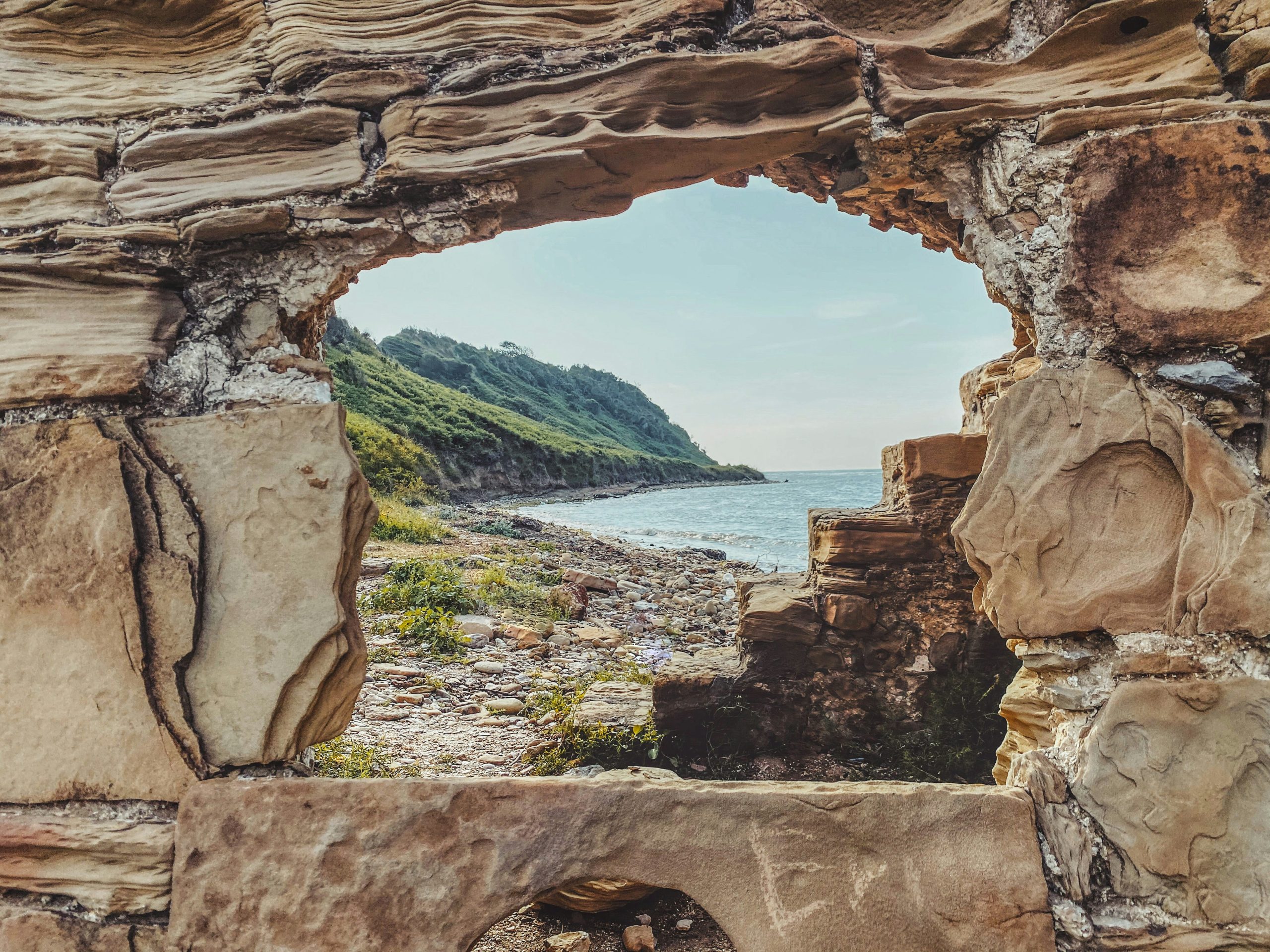
Albania and Sussex have a lot in common. Similar population, with most young people moving to London. Pronunciation incomprehensible to outsiders. 150 miles of gorgeous limestone coastline. And of course, the wine: both regions now lay claim to two dozen good wineries.
But while fermented grape juice from Sussex is now on every wine lover’s table, few if any have ever tasted any from Albania. It is Europe’s dark side, a land only gradually explored by outsiders since 1991—under its tragicomical Stalinist regime, borders were essentially closed. The names of wines and grapes—Ceruja, Vlosh, Kabjuro, Gems—read like sorcerer’s spells in a language isolate (which Albanian nearly is).
Unlike most other countries I visited, I had completely no idea what to expect from Albania. It offers a cultural shock, not only for its ethnic and linguistic idiosyncrasies. It blends familiar ingredients: Balkan roughness, Turkish exoticism, Italianate allure, Greek joie de vivre, 21st-century globalisation, but the resulting flavour is exhilaratingly distinctive. As my teenage daughter summed up on our first afternoon, “there’s everything here,” not least in high-energy Tirana, the Bangkok of Europe.
Arguably, the wine moment we currently live in—call it the Weinzeitgeist if you will—is driven by novelty. For many aficionados, classic wines have largely become soporific; a fellow taster recently confessed she’d rather drink a cocktail than a glass of Marlborough Sauvignon Blanc. It’s so much more exciting to chase near-defunct varieties not even mentioned in Wine Grapes or stuff from the strangest of places like Venezuela, Mauritius, Taiwan, and indeed, Sussex. For most people, Albania belongs on that list: wines that are good because they are interesting and interesting because they are different.
In the end, though, I believe Albania will have an edge. As I discovered during my field trip last summer, the country is quickly upgrading. Boutique wineries are popping up through the regions and bottling some smart wines. Random Primitivo dominates in many bars, anything Italian still considered “prestige” by the local jet-set. But quality-driven producers are making palpable progress. Indeed, I found the average level easily equal, if not superior, to Albania’s immediate neighbours such as Macedonia, Bulgaria, or Serbia. There are wines that would fit into the extremely dynamic vinous landscape of Greece.
More importantly, Albanian Wine 2.0 is smart. The cépages améliorateurs of yesterday, Merlot and Chardonnay, are clearly perceived as not so much improving. The focus on identity is gaining momentum, with a race to save ancient grapes from oblivion. Some have now successfully reemerged as sustainable propositions, like Pulëz (aka Puls), Albania’s answer to Chenin Blanc, crafted variously into salty mineral, rich oaky, and even sparkling styles. The light-hearted red Debina and versatile Kallmet are now also firmly mainstream, and the exciting search for future stars continues, helped by the considerable diversity of microclimates, from sea-level warm Mediterranean in the west to sub-Alpine in the south-east on the Greek border.
It takes some effort to discover these wines. Availability outside Albania is limited to a handful of brands, Çobo being the most established. Exports are embryonic because the domestic market of four million people — and Albania’s developing tourist industry, with ten million visitors annually — easily absorb the entire production, but also because Albania is not even an afterthought for international buyers and drinkers. It is the periphery of the periphery, wine’s final frontier.
I reached Pogradec after a bumpy ride on a private coach and then aggressive negotiations with three taxi drivers. A busy junction, the town sits on the western shore of azure Lake Ochrid; on the other side is Macedonia. I had tasted a delicious Muscat from here, but now discovered this high-perched area abounds with local specialities, too: Debina, Pamid, and Gems. The best winery, Caco, morphs them into an accomplished range of contemporary-styled wines that put Albania firmly within the premium European family. It proved an awkward contrast to sitting, half an hour later, with raki-sipping locals at the dusty bus station with a definite Wild East feel.
The next day, I drove for six hours with Flori Uka, owner and winemaker of the eponymous winery, through several mountain passes at 1,200 metres before descending into Mat, an Arcadian valley of olive groves and vineyards. I was on a mission to investigate Ceruja, a mysterious grapevine trained on mulberries trees and harvested on ladders like millennia ago. Smallholders continue to grow a few of those arbor vines here and there, alongside their main crop, pomegranate, making a rustic wine from both (sometimes blended) for home consumption. Flori learned about Ceruja from his father Rexhep, a professor of entomology and former minister of agriculture, who had travelled extensively throughout rural Albania for research. At every home we now visited together, a lavish lunch was served together with an endless series of toasts with local raki, mustard wine (don’t ask), and “Barbera” (was it? it did have that tang) filled by the host into empty bottles of Diet Coke. There were vivid conversations in Albanian from which I understood not a single a word and it all felt very, very far from ProWein, Decanter and Taillevent.
Those boxes of Ceruja grapes Flori buys with a handshake are then transported to Uka Farm. Founded on the outskirts of Tirana as a botanical repository by Rexhep, it has now spawned a small winery and a super successful farm-to-table restaurant that wouldn’t be out of place in Copenhagen. Flori vinifies those palaeolithic grapes into an imaginary successor to Huët’s Vouvray Sec: brimming with salty extract and white fruit luminosity. The tiger’s leap from yesterday to tomorrow is a perfect encapsulation of Albania’s unique paradoxes.
At the moment, Albania is cashing in its mystery factor, but you read it here first: it won’t be long before it comes out of Sussex’s shadow.
Photo by Danny Froese on Unsplash